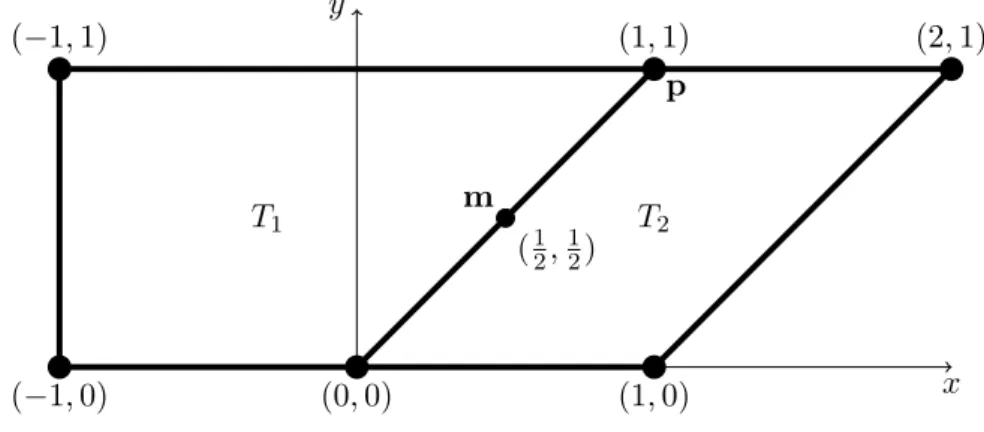Scientific Computing I
Wintersemester 2018/2019 Prof. Dr. Carsten Burstedde
Jose A. Fonseca
Exercise Sheet 8. Due date: Tue, 11.12.2018.
Exercise 1. (Tensor Lagrange elements) (2+4 Points) Let k ∈ N and P
kdenote the set of polynomials of degree less or equal than k in one variable. We further define
Q
k:=
X
j
c
jp
j(x)q
j(y) | p
j, q
j∈ P
k
(1)
a) Show that dim Q
k= (dim P
k)
2and that {x
iy
j| 0 ≤ i, j ≤ k} is a basis for Q
k. b) Let T be the unit square, Π = Q
kand Σ denote point evaluations at the points
{(t
i, t
j) | i, j = 0, 1, . . . , k} where {0 = t
0< t
1. . . < t
k= 1}. Prove that (T, Π, Σ) is a finite element.
Exercise 2. (Isoparametric elements) (2+1+3 Points) Consider the following basis functions defined over the square [−1, 1]
2,
χ
1(ξ, η) = (ξ − 1)(η − 1)/4, (2a)
χ
2(ξ, η) = −(ξ + 1)(η − 1)/4, (2b)
χ
3(ξ, η) = (ξ + 1)(η + 1)/4, (2c)
χ
4(ξ, η) = −(ξ − 1)(η + 1)/4. (2d)
These basis functions may be mapped to a quadrilateral with vertices (x
ν, y
ν), for ν = 1, 2, 3, 4, by the change of variables
x(ξ, η) =
4
X
ν=1
x
νχ
ν(ξ, η), y(ξ, η) =
4
X
ν=1
